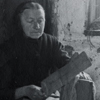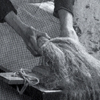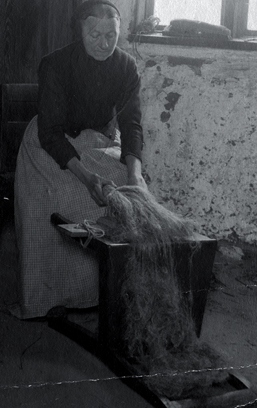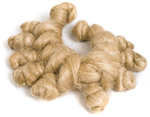Hackling was necessary before the fibres could be spun. This can be compared to combing long hair, and it produced linen fibres that were fine and shiny. In Danish the term is called “hegle” and can refer to a rough, arrogant woman. To “hegle igennem” in Danish is somewhat similar to “tear a strip off” in English.
The hackle was a block with several rows of iron pins and it was mounted on a board. Firstly the linen was pulled through a rough hackle and the waste from the rough hackle, the tow, was used for example, to make rough clothing. Next a hackle with finer and closer set pins was used, and the finer the hackle, the finer was the resulting linen thread that could be spun. The very finest of linen thread was produced from pulling 2 strands several times through the finest hackle. Hedebo Embroidery was only worked with the finest threads.
The hackled linen was gathered in locks and formed into wreaths. The wreaths were often hung in the back room until the linen was spun. Many linen wreaths were an indication of prosperity.













